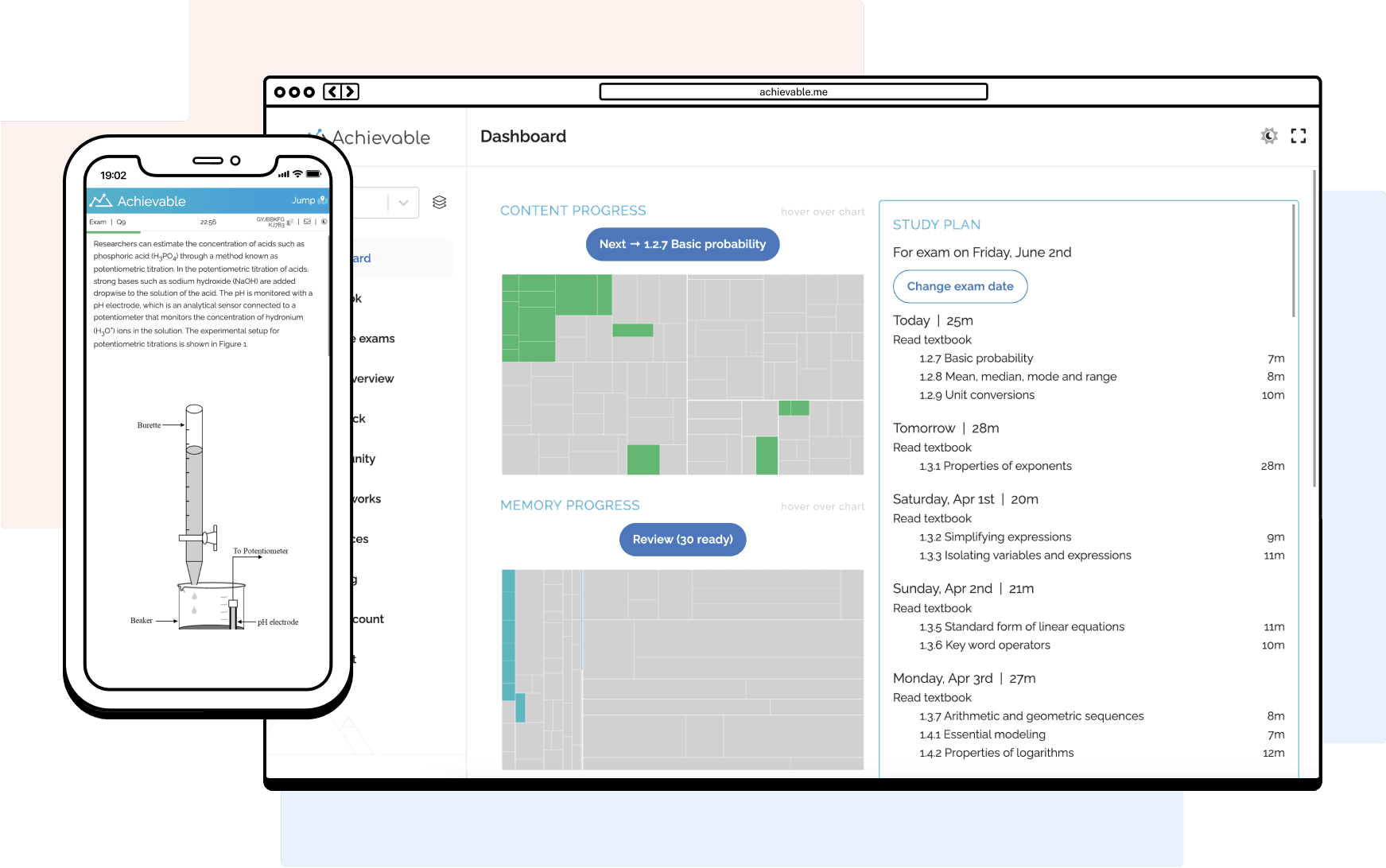
NPTE-PTA Exam information
What it is, what's tested, and how it's scored.

NPTE-PTA exam details
The NPTE-PTA (National Physical Therapy Exam - Physical Therapist Assistant) is one of two physical therapy licensing exams administered by the FSBPT (Federation of State Boards of Physical Therapy). The exam ensures that each candidate possesses the necessary knowledge to practice as a physical therapist assistant and can provide adequate care to their patients. The NPTE-PTA exam costs $485 to register. Participants have 4 hours to answer 180 multiple-choice questions, and the passing score is 600+.
The NPTE-PTA exam is hosted by FSBPT and costs $485 to register. Participants have 4 hours to answer 180 multiple-choice questions. The passing score is 600+.
The NPTE-PTA exam consists of four sections, each with 45 multiple-choice questions. The content of the PTA exam covers bodily systems, human anatomy and mobility, and non-system domains such as equipment use and professional responsibilities.

NPTE's PTA exam summary
Cardiovascular and Pulmonary Systems
14-19%
20 to 27 questions
This section focuses on the anatomy and physiology of the heart, lungs, and blood system. It explores topics such as disease prevention, diagnoses, movement analysis, complications, and adverse effects within these systems. It is crucial to evaluate different breathing and relaxation tactics and fitness endurance plans.
Musculoskeletal System
22-29%
31 to 40 questions
This section focuses on the anatomy and physiology of muscles, joints, bones, and tendons. It explores topics such as joint biomechanics, movement analysis, connective tissue diseases, and diagnoses. Strength exercises, joint mobility strategies, and flexibility methods are examined.
Neuromuscular and Nervous Systems
19-25%
27 to 35 questions
This section focuses on the anatomy and physiology of nerves, motor neurons, and muscle fibers. It covers topics such as motor control and learning, the impact of regenerative medicine, and diagnoses. Awareness of balance and coordination methods is necessary.
Other Systems
10-25%
14 to 35 questions
This section includes the Integumentary, Metabolic and Endocrine, Gastrointestinal, Genitourinary, and Lymphatic systems, as well as System Interactions:
Integumentary System: Covers topics such as skin, hair, nails, and glands, as well as scar mobility, pressure, friction, and surgical interventions. Recognizing techniques for pressure relief, pain management, and healing capabilities is paramount.
Metabolic and Endocrine Systems: Focuses on metabolism, hormones, and the thyroid, covering topics such as diagnoses, health promotion using daily activities and understanding nutrient absorption, and adrenal and pituitary conditions.
Gastrointestinal: Covers the GI tract, including the esophagus, intestines, stomach, and rectum. Explores topics such as diagnoses, muscular tension, bowel movements, and reflux prevention.
Genitourinary System: Covers topics such as urinary organs, bladder, kidneys, and genitals. Explores diagnoses, bladder conditions, pelvic floor retraining, and the reproductive system.
Lymphatic System: Focuses on lymphatic vessels, nodes, organs, and tissues. Explores diagnoses, diseases, compensatory movements, and adverse effects within this system.
System Interactions: Focuses on diseases and conditions involving multiple systems, dimensions of pain, indications and precautions, applications, and adjustments.
Non-system Domains
16-23%
22 to 32 questions
This section covers a broad range of topics on physical therapy practice, which can be divided into two main content domains: Therapeutic Modalities and Professional Responsibilities.
Therapeutic Modalities: Focuses on the use of equipment, devices, and modalities such as thermal, electrical, and nerve stimulation, mechanical motion devices, infection control, signs of abuse, injury prevention, and biofeedback.
Professional Responsibilities: Focuses on safety and protection standards, patient/client rights, professional ethics, state and federal laws, socioeconomic factors, risk management, utilization of health records, and billing standards.

Achievable NPTE-PTA content outline
1
Cardiovascular System
This section covers cardiac anatomy and physiology, blood flow, electrical conduction, and the effects of cardiovascular pathologies such as heart failure, MI, and hypertension. You will study examination techniques like heart rate, blood pressure, auscultation, and EKG interpretation. Interventions include aerobic training, vital sign monitoring, and cardiac rehab phases. Understanding contraindications, MET levels, and emergency responses (e.g., for angina or orthostatic hypotension) is essential.
2
Pulmonary System
Pulmonary topics focus on normal lung mechanics, oxygenation, and gas exchange, along with obstructive (e.g., COPD, asthma) and restrictive (e.g., fibrosis, scoliosis) lung diseases. You'll review breath sounds, chest wall movement, ABG interpretation, and spirometry values. Interventions include airway clearance techniques, postural drainage, breathing exercises, and the use of oxygen therapy. Recognizing signs of respiratory distress and managing pulmonary devices (e.g., ventilators, O2 masks) is also emphasized.
3
Neurological System (Including Pediatrics)
This unit addresses central and peripheral nervous system disorders such as CVA, SCI, Parkinson’s, MS, and pediatric conditions like cerebral palsy and developmental delays. Emphasis is placed on motor learning, neuroplasticity, PNF, NDT, gait training, balance assessment, and functional outcome measures. Pediatric milestones, reflex integration, and age-appropriate intervention strategies are also tested. Interventions include facilitation/inhibition techniques, sensory integration, and coordination exercises.
4
Musculoskeletal System
Topics include joint structure and function, muscle physiology, biomechanics, and common conditions like OA, RA, fractures, tendon/ligament injuries, and post-op protocols (e.g., ACL, THA). Assessment tools include goniometry, MMT, special tests, and palpation. Interventions emphasize therapeutic exercise, manual therapy, modalities, and patient education. Proper progression, contraindications, and assistive device prescription are critical components.
5
Other Systems
This section involves endocrine, metabolic, integumentary, immune, GI, and GU systems. You’ll study diabetes management, wound healing stages, burns, pressure injuries, and infection control. Interventions include positioning, pressure relief, dressing types, and skin inspection. PTA scope in wound care, post-mastectomy rehab, and oncology-related precautions are also covered.
6
Non-Systems
Non-systems content includes modalities (e.g., ultrasound, e-stim, cryo/thermotherapy), safety procedures, emergency responses, assistive devices, prosthetics, and equipment. You'll also be tested on research and evidence-based practice, ethics, supervision, documentation, ADA guidelines, and infection control. Knowing parameters and contraindications for therapeutic modalities is key. This section supports clinical reasoning and professional responsibility across all settings.

Pass the NPTE-PTA. Guaranteed.
Achievable is the best online NPTE-PTA exam prep course: effective, personalized, and convenient. With Achievable, you'll spend less time studying and pass your exam the first time, or your money back.